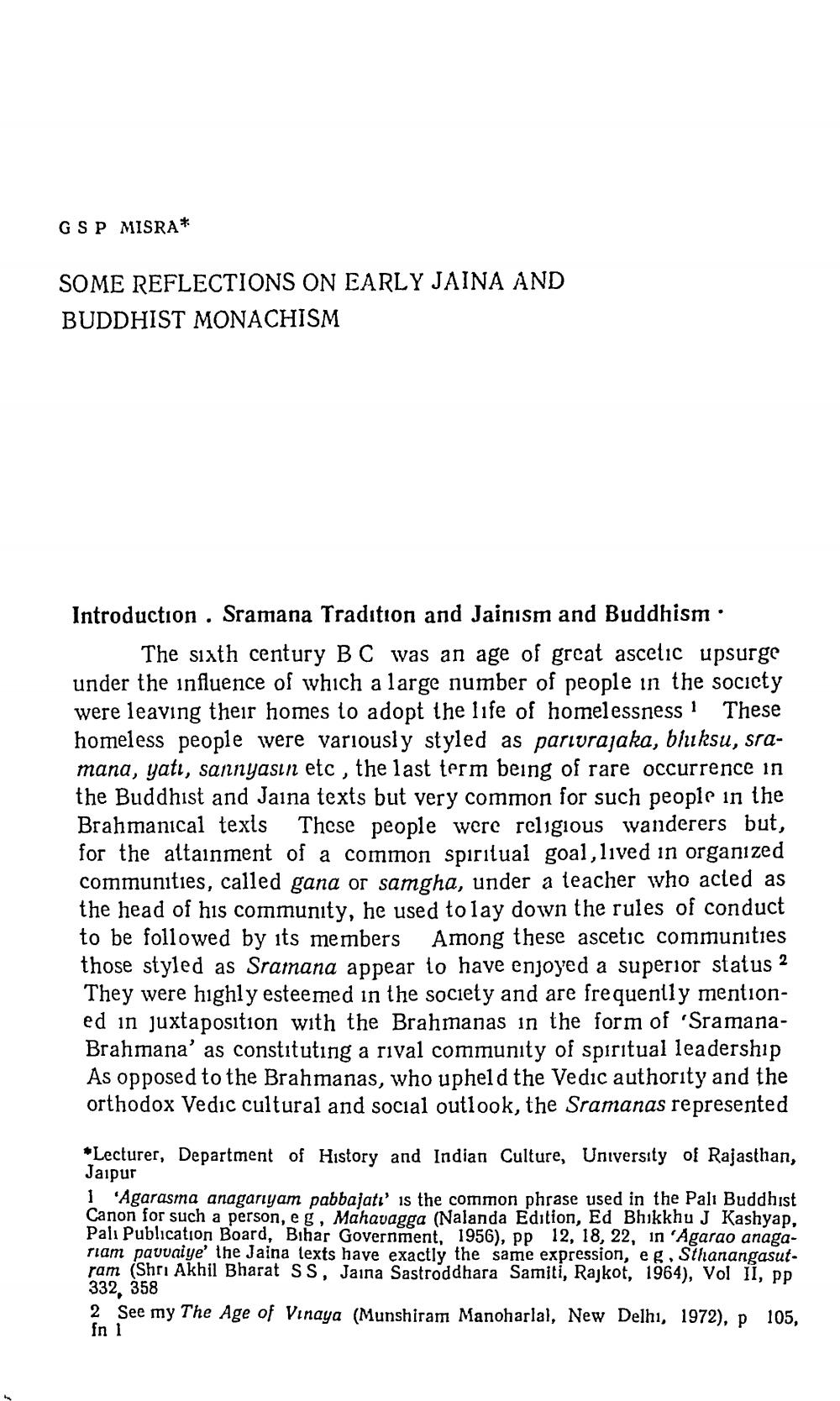________________
GSP MISRA*
SOME REFLECTIONS ON EARLY JAINA AND BUDDHIST MONACHISM
Introduction . Sramana Tradition and Jainism and Buddhism.
The sixth century BC was an age of great ascetic upsurge under the influence of which a large number of people in the society were leaving their homes to adopt the life of homelessness! These homeless people were variously styled as parturajaka, bluksu, sramana, yatı, sannyasın etc , the last term being of rare occurrence in the Buddhist and Jaina texts but very common for such people in the Brahmanical texts These people were religious wanderers but, for the attainment of a common spiritual goal,lived in organized communities, called gana or samgha, under a teacher who acted as the head of his community, he used to lay down the rules of conduct to be followed by its members Among these ascetic communities those styled as Sramana appear to have enjoyed a superior status 2 They were highly esteemed in the society and are frequently mentioned in juxtaposition with the Brahmanas in the form of 'SramanaBrahmana' as constituting a rival community of spiritual leadership As opposed to the Brahmanas, who upheld the Vedic authority and the orthodox Vedic cultural and social outlook, the Sramanas represented
*Lecturer, Department of History and Indian Culture, University of Rajasthan, Jaipur I'Agarasma anagariyam pabbajatı' is the common phrase used in the Pali Buddhist Canon for such a person, eg, Mahavagga (Nalanda Edition, Ed Bhikkhu J Kashyap. Pali Publication Board, Bihar Government, 1956), pp 12, 18, 22, in 'Agarao anagariam pauvaiye' the Jaina texts have exactly the same expression, eg. Sthanangasutram (Shri Akhil Bharat SS, Jaina Sastroddhara Samiti, Rajkot, 1964), Vol II, pp 332, 358 2 See my The Age of Vinaya (Munshiram Manoharlal, New Delhi, 1972), p 105, fn 1




